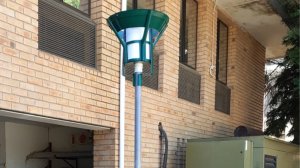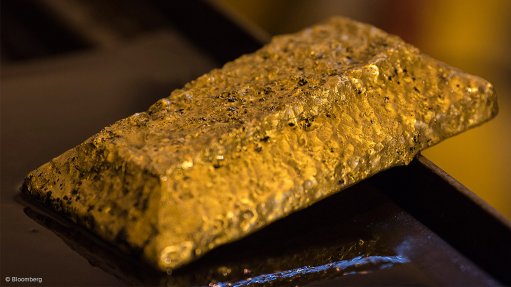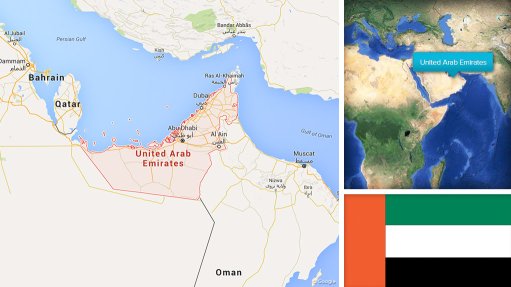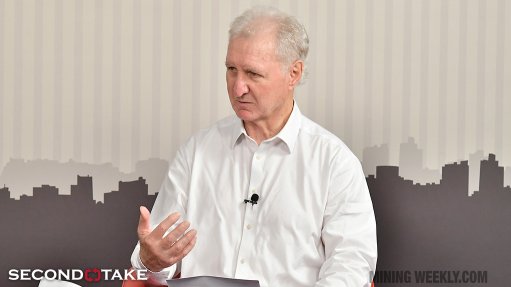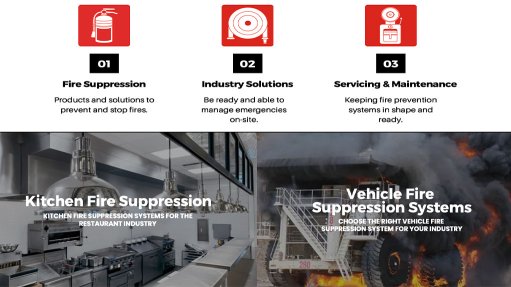DMS pioneers first local fibreglass dust fallout unit with locking brackets
To mitigate the theft of dust fallout units deployed in the field, Johannesburg-based dust fallout unit manufacturer Dust Monitoring Services (DMS) has developed South Africa’s first fibreglass single-bucket dust fallout unit with locking brackets.
“We received numerous requests for an alternative to our steel unit, comprising stainless and mild steel. After having tried many different materials it was decided to design and build a prototype unit using fibreglass. Theft was becoming a major issue for our clients and the expense of replacing steel units was becoming too high and was compounded by the loss of critical data,” says DMS director Byron Kluckow.
While there was a fibreglass unit on the market, DMS’s unit is designed around the specific needs of one of its clients, which has a substantial installed base of dust fallout units and required a product that was fit for purpose, but also aesthetically pleasing.
Small features not incorporated in the design of the existing fibreglass unit, such as openings on the bucket holder to enable the reading of bucket labels without having to remove the bucket in the field, needed to be included in the DMS design.
The company’s unit, comprising a 50 mm pole and bucket holder, also includes fibreglass locking brackets to secure the bucket to the unit.
The fibreglass locking brackets prevent tampering with the sample or bucket theft and are compatible with the same keyed-alike lock and pin used by the steel units supplied by DMS.
“Our clients can transition to the new unit with ease and without their field teams having to carry multiple different keys,” explains Kluckow.
DMS started discussing the fibreglass unit with its client last year, but development was put on hold owing to shutdown in December. The company has been working full time on the unit since the start of January.
South Africa’s dust fall regulations specify the use of the ASTM D1739-70 standard for the collection and measurement of dust fall but some DMS clients prefer to use the newer D1739-98 or SANS1137 method, which involves the use of a windshield.
“Therefore, the challenge was to design one unit that could be adapted to either method by incorporating a detachable windshield that can be attached should a client wish to change over to the newer method,” states Kluckow.
As fibreglass is not as strong as stainless steel, to resolve the issue, a different shape for the upright supports was incorporated, which also ensures proper drainage to prevent the unit from collecting water during rainy seasons.
After the design of the unit was finalised, a three-dimensional pattern was created using wood. The pattern is used to cast moulds from which to manufacture the fibreglass unit.
Kluckow expects the fibreglass unit to be more popular than the steel version, owing to the unit being an improvement on the steel unit in almost every department.
Besides deterring theft, the unit is much lighter than its steel counterpart, so transportation costs will be much less when exporting the units.
Interest in the unit is currently confined to South Africa, but Kluckow expects the reduced cost of transporting the unit to make it more attractive to other African markets.
“The fibreglass unit weighs less than half the steel version, translating into a substantial saving if one were to airfreight it to other African countries,” he states, adding that the units will also not rust in the field.
The fibreglass unit is being manufactured in Gauteng, with four people involved in the manufacturing process, but the 50 mm glass fibre tube is sourced from Cape Town.
DMS can manufacture 40 units a month but plans to ramp up production by creating enough moulds to double its capacity. Thereafter, moulds will be added as needed.
“While the set-up costs of the fibreglass unit are higher, owing to the moulds required for each component, going forward the production cost should be lower. The steel industry has also experienced numerous shortages in tubing during the last year, which has negatively impacted on our manufacturing and the cost of our steel units,” explains Kluckow.
The development of the unit has just been completed; however, based on previous requests and discussions with clients, he believes demand for the fibreglass unit outweighs that for the company’s steel unit.
“In addition, one of our clients has committed to use the fibreglass unit as their main unit in future,” concludes Kluckow.
Article Enquiry
Email Article
Save Article
Feedback
To advertise email advertising@creamermedia.co.za or click here
Press Office
Announcements
What's On
Subscribe to improve your user experience...
Option 1 (equivalent of R125 a month):
Receive a weekly copy of Creamer Media's Engineering News & Mining Weekly magazine
(print copy for those in South Africa and e-magazine for those outside of South Africa)
Receive daily email newsletters
Access to full search results
Access archive of magazine back copies
Access to Projects in Progress
Access to ONE Research Report of your choice in PDF format
Option 2 (equivalent of R375 a month):
All benefits from Option 1
PLUS
Access to Creamer Media's Research Channel Africa for ALL Research Reports, in PDF format, on various industrial and mining sectors
including Electricity; Water; Energy Transition; Hydrogen; Roads, Rail and Ports; Coal; Gold; Platinum; Battery Metals; etc.
Already a subscriber?
Forgotten your password?
Receive weekly copy of Creamer Media's Engineering News & Mining Weekly magazine (print copy for those in South Africa and e-magazine for those outside of South Africa)
➕
Recieve daily email newsletters
➕
Access to full search results
➕
Access archive of magazine back copies
➕
Access to Projects in Progress
➕
Access to ONE Research Report of your choice in PDF format
RESEARCH CHANNEL AFRICA
R4500 (equivalent of R375 a month)
SUBSCRIBEAll benefits from Option 1
➕
Access to Creamer Media's Research Channel Africa for ALL Research Reports on various industrial and mining sectors, in PDF format, including on:
Electricity
➕
Water
➕
Energy Transition
➕
Hydrogen
➕
Roads, Rail and Ports
➕
Coal
➕
Gold
➕
Platinum
➕
Battery Metals
➕
etc.
Receive all benefits from Option 1 or Option 2 delivered to numerous people at your company
➕
Multiple User names and Passwords for simultaneous log-ins
➕
Intranet integration access to all in your organisation




